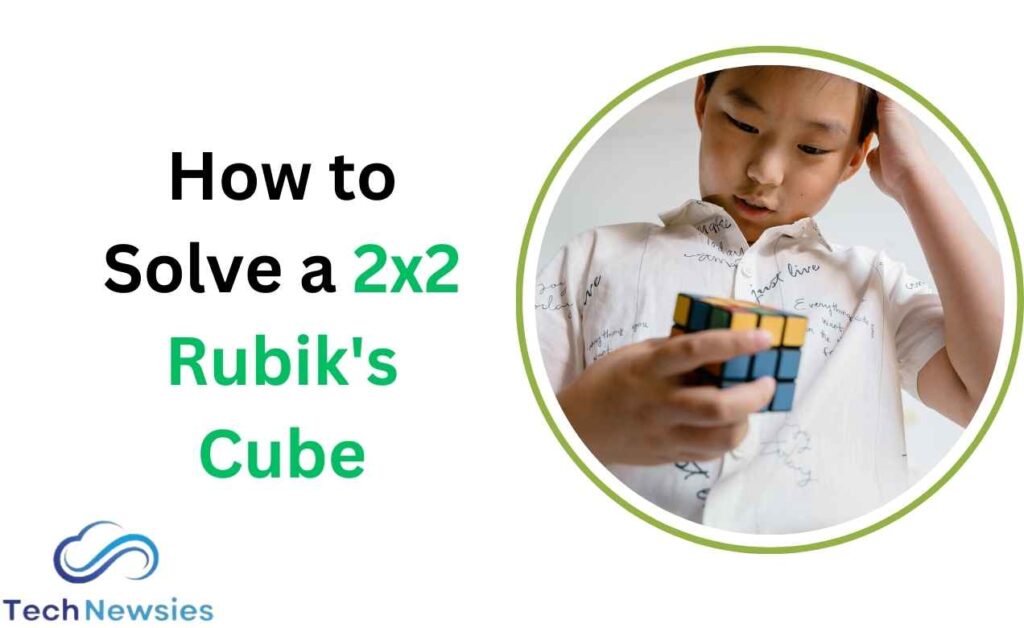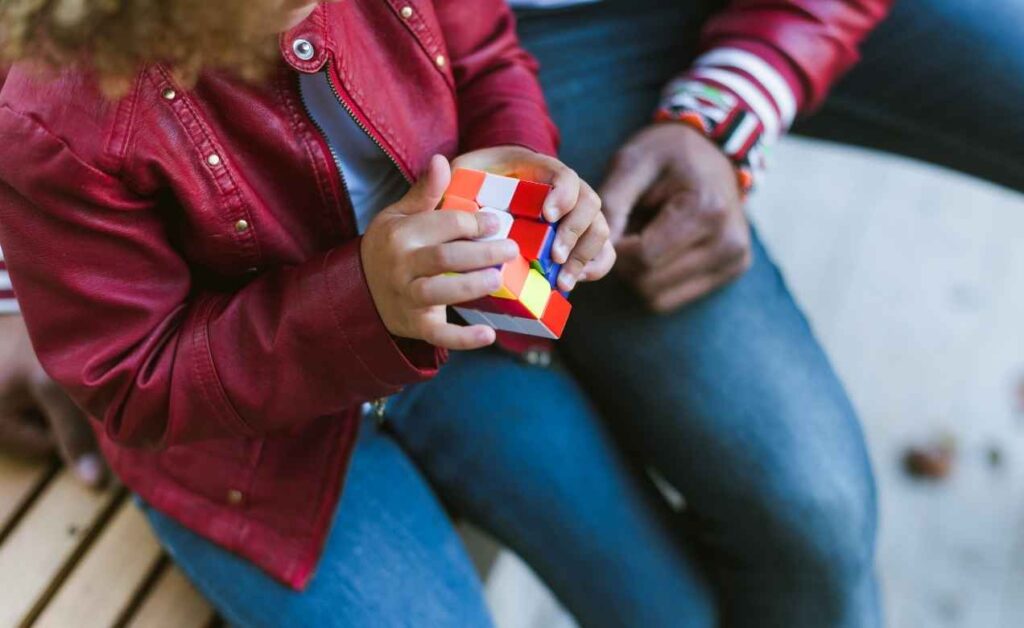
- Introduction: Why Solve a 2×2 Rubik’s Cube?
- Understanding the 2×2 Rubik’s Cube
- Cube Notation: Getting Familiar with the Basics
- Step-by-Step Guide to Solving the 2×2 Rubik's Cube
- Step 1: Solve the First Layer
- Step 2: Aligning the First Layer Corners
- Step 3: Solve the Second Layer (Top Layer)
- Step 4: Orienting the Top Layer Corners
- Step 5: Permuting the Top Layer Corners
- Tips for Faster Solving
- Common Mistakes to Avoid
- Practicing the Right Way
- What to Do If You Get Stuck
- Benefits of Solving a 2×2 Rubik’s Cube
- Conclusion: The Journey to Mastery
- Frequently Asked Questions (FAQs)
Introduction: Why Solve a 2×2 Rubik’s Cube?
The 2×2 Rubik’s Cube might look small, but don’t let its size fool you! It’s a fun and challenging puzzle that has captured the attention of people worldwide. If you’re new to the Rubik’s Cube, the 2×2 is a perfect place to start. It’s simpler than the classic 3×3, but still offers plenty of mental gymnastics. Plus, solving it can improve your spatial reasoning, memory, and problem-solving skills.
So, are you ready to master this mini marvel? Let’s dive in!
Understanding the 2×2 Rubik’s Cube
Before you start solving the cube, it’s important to understand what you’re dealing with. The 2×2 Rubik’s Cube, often called the “Pocket Cube,” doesn’t have the edge or center pieces like the 3×3 cube. Instead, it consists only of corner pieces. This simplifies the puzzle somewhat, but it still requires strategy and algorithms to solve.
Each of the six faces of the cube is made up of four smaller squares, with the goal being to get all of one color on each face. Despite being smaller, the 2×2 can still be scrambled into millions of possible configurations!
Cube Notation: Getting Familiar with the Basics
To solve the cube, you need to understand basic cube notation, which tells you how to rotate different parts of the cube. These notations represent specific turns:

- R – Right face clockwise
- R’ – Right face counterclockwise
- L – Left face clockwise
- L’ – Left face counterclockwise
- U – Upper face clockwise
- U’ – Upper face counterclockwise
- D – Down face clockwise
- D’ – Down face counterclockwise
- F – Front face clockwise
- F’ – Front face counterclockwise
- B – Back face clockwise
- B’ – Back face counterclockwise
Familiarize yourself with these notations, as they’ll be your roadmap for solving the cube.
Step-by-Step Guide to Solving the 2×2 Rubik’s Cube
The solution to the 2×2 Rubik’s Cube can be broken down into a few simple steps. Each stage builds upon the last, so be patient and work through the process carefully. Let’s start with the first step!
Step 1: Solve the First Layer
The first task is to solve the white face. Think of this as assembling one complete side. This includes not just placing the white corner pieces correctly, but also making sure that the adjacent colors on the sides are aligned with their corresponding centers.
Here’s how to do it:
- Find a white corner piece and position it correctly on the bottom layer.
- Look for adjacent pieces that have white, and try to form a full layer.
You might need to rotate the cube a few times to get it right. There are no complicated algorithms here—just logical thinking and patience.
Step 2: Aligning the First Layer Corners
Once the white face is solved, you need to ensure the corner pieces on the first layer are properly aligned. This means that the colors on the side should match up with the neighboring faces.
If they don’t align, use a simple algorithm like R U R’ U’ to adjust the positioning without scrambling your solved face.
Step 3: Solve the Second Layer (Top Layer)
Now that the bottom layer is complete, it’s time to focus on the top. This step involves orienting the pieces on the second layer, which may seem a little trickier, but it’s manageable with the right algorithm.
First, check if any of the top layer pieces are already in place. If not, you’ll need to use a series of rotations to correctly orient them. Begin by using an algorithm like R U R’ U R U2 R’ to adjust the top layer pieces.
Step 4: Orienting the Top Layer Corners
The goal here is to get all the top layer corners in the correct orientation. Essentially, you want the yellow pieces on top. You might find that some corners are already oriented correctly, while others are not.
Use the following algorithm to orient the corners: R U R’ U R U2 R’. Repeat this algorithm until all the yellow pieces are facing upwards.
Step 5: Permuting the Top Layer Corners
Now it’s time to swap the corner pieces into their correct spots. This step is known as corner permutation. You’ll need to recognize which pieces need to be swapped and use a simple algorithm to do so.
The algorithm for this step is U R U’ L’ U R’ U’ L. Keep applying this until all the corners are in the correct positions.
Tips for Faster Solving
Once you’ve mastered the basic method, you’ll likely want to solve the cube faster. Here are a few tips for improving your speed:
- Practice Algorithms: The more familiar you are with algorithms, the faster you’ll be.
- Look Ahead: Try to anticipate your next move while performing the current one.
- Finger Tricks: Learn how to quickly turn the cube with minimal hand movement.
Speed solving comes with time, so don’t rush it. Focus on accuracy first!
Common Mistakes to Avoid
Many beginners make common mistakes, such as:
- Misaligning the corners during orientation.
- Forgetting to follow the correct algorithm steps.
- Trying to force pieces into place rather than using the algorithms.
Pay attention to detail, and don’t get discouraged by mistakes—they’re part of the learning process.
Practicing the Right Way
Like any skill, solving a Rubik’s Cube gets easier with practice. Set aside time each day to practice, even if it’s just for 10-15 minutes. Focus on mastering each step before moving on to the next one. With enough repetition, the solving process will become second nature.
What to Do If You Get Stuck
If you find yourself stuck, don’t panic! Take a break and come back with fresh eyes. Double-check your algorithms and make sure you haven’t misaligned any pieces. Sometimes, taking a moment to reassess can help you spot where things went wrong.
Benefits of Solving a 2×2 Rubik’s Cube
Solving a 2×2 Rubik’s Cube isn’t just a fun pastime—it’s also great for your brain! Studies show that solving puzzles like the Rubik’s Cube can improve memory, spatial awareness, and problem-solving abilities. Plus, it’s a rewarding hobby that builds patience and perseverance.
Conclusion: The Journey to Mastery
Solving a 2×2 Rubik’s Cube is a rewarding challenge that requires both logic and practice. By breaking down the process step by step and familiarizing yourself with the algorithms, you’ll be able to solve it with ease. Don’t forget: practice makes perfect, so keep turning that cube until you master it!
Frequently Asked Questions (FAQs)
- How long does it take to solve a 2×2 Rubik’s Cube?
- On average, beginners can solve it within a few minutes, but speed solvers can finish in under 5 seconds!
- Is the 2×2 cube harder than the 3×3 cube?
- It’s generally easier since there are fewer pieces to manipulate, but it still requires strategic thinking.
- What is the world record for solving the 2×2 cube?
- The current world record is less than 1 second!
- Can I solve the 2×2 cube without knowing algorithms?
- While it’s possible, knowing algorithms makes solving it much faster and easier.
- Does solving a 2×2 Rubik’s Cube improve cognitive skills?
- Yes, it helps improve memory, concentration, and problem-solving skills.


